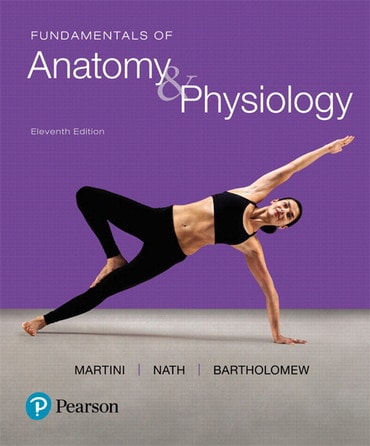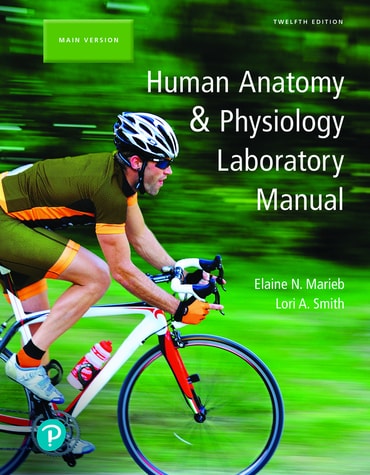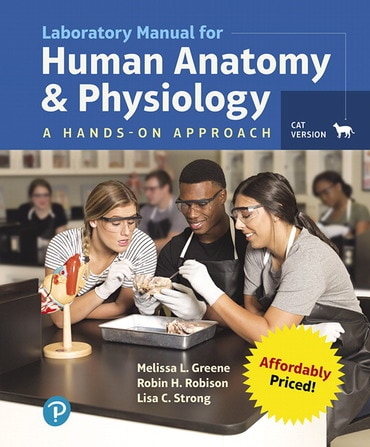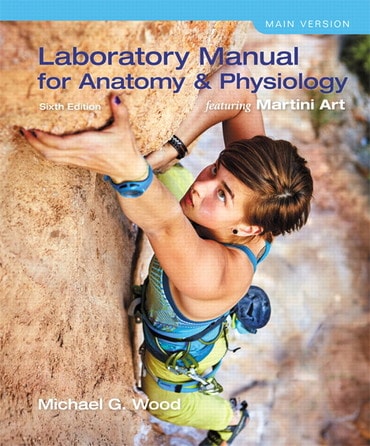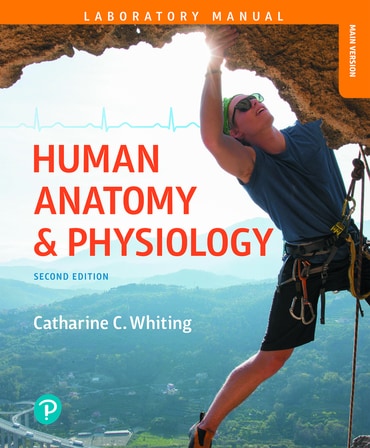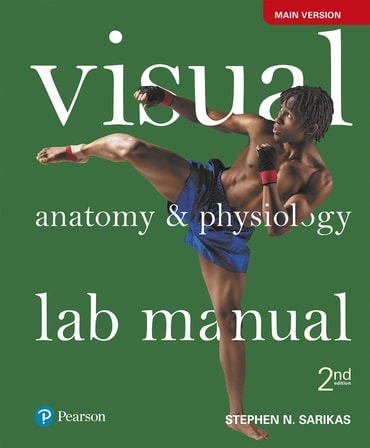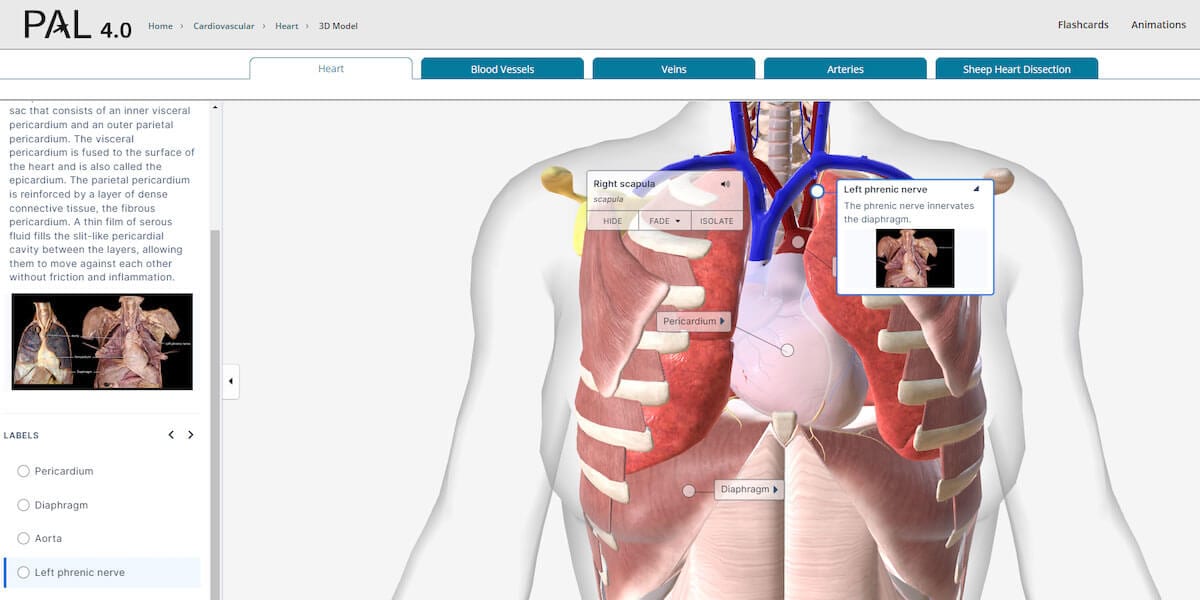Discover how drawing impacts learning and the brain with Michael Wood, author of Laboratory Manual of Anatomy & Physiology featuring Martini Art. Get tips for incorporating drawing into the A&P lab.
Anatomy & Physiology
Engage and prepare students for success

Mastering A&P
Learn how Mastering® A&P helps actively engage students, identify struggling students and drive learning outcomes.
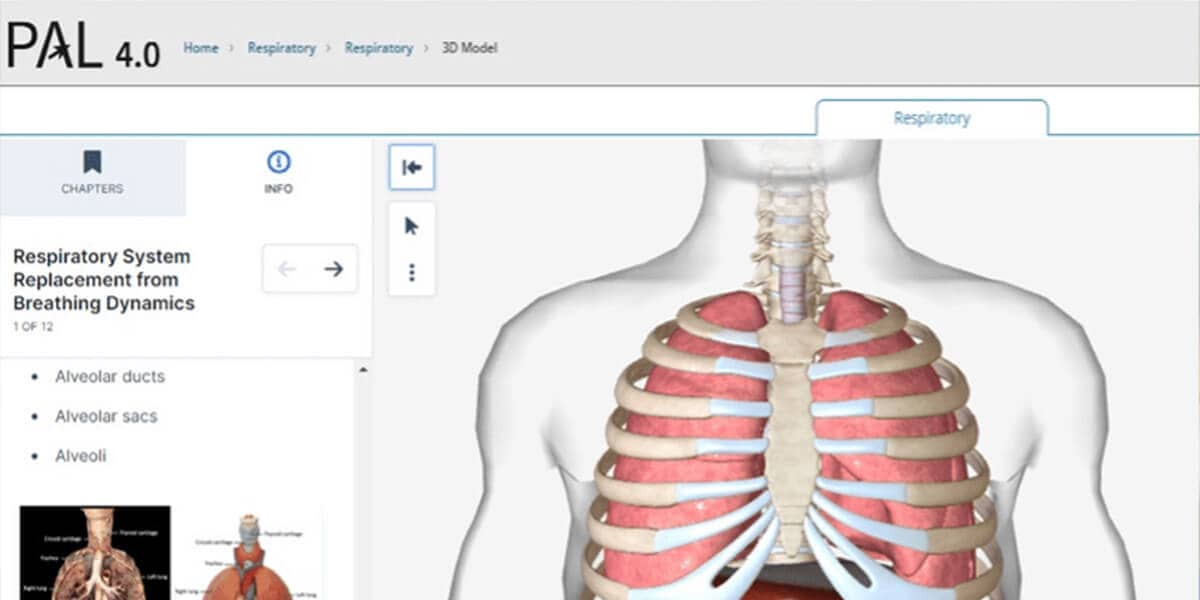
Practice Anatomy Lab (PAL) 4.0
An immersive virtual anatomy lab with interactive models and practice exercises for comprehensive student engagement.
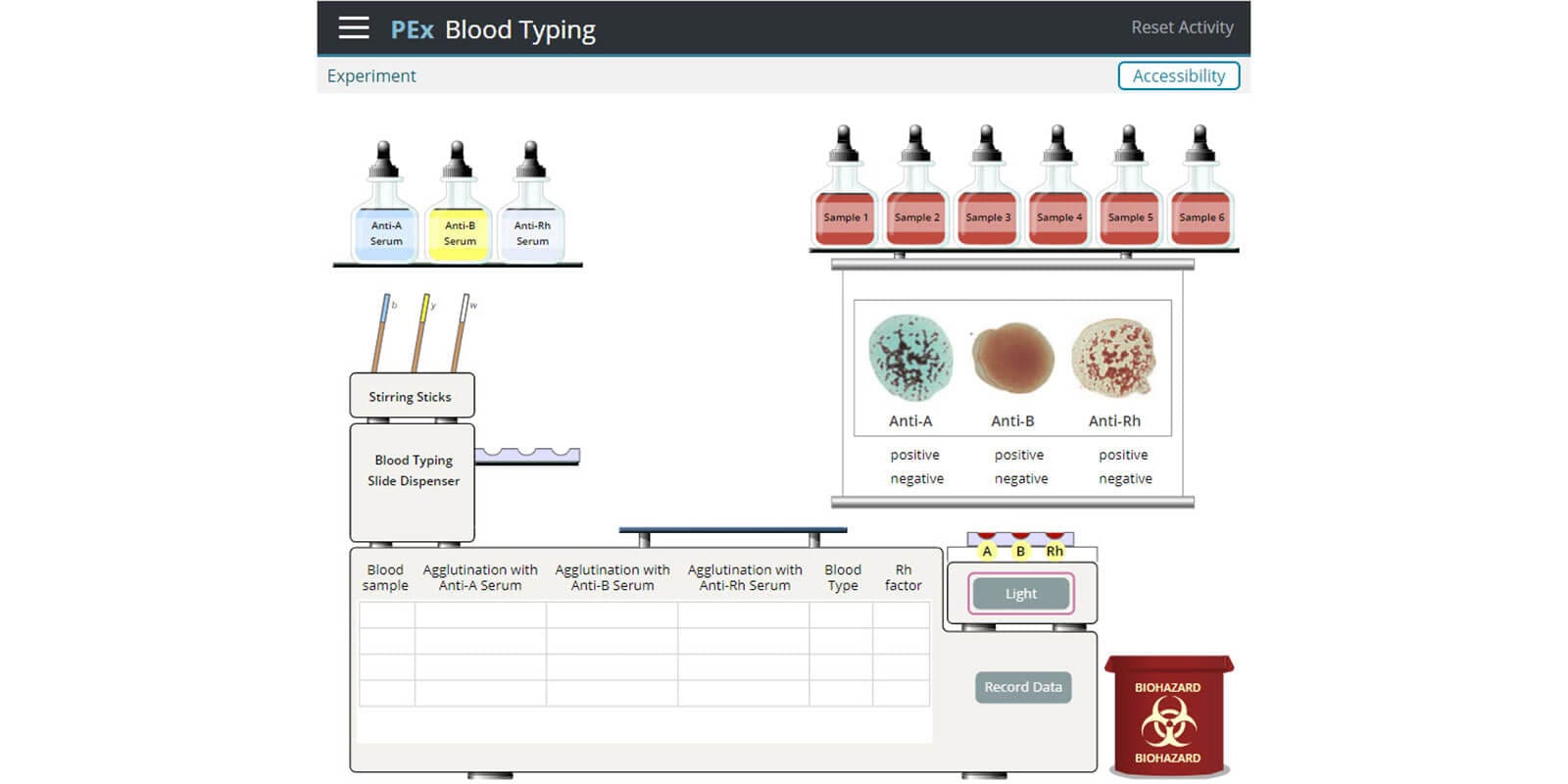
PhysioEx 10.0 Laboratory Simulations
This virtual physiology practice tool features over 60 easy-to-use lab simulation activities that complement or replace wet labs. Activities help students prepare for and get the most out of lab time.
2-Semester A&P Lecture





2-Semester A&P Lab





1-Semester A&P Lecture




Explore titles for anatomy & physiology
Join Dr. Erin Amerman, author of Human Anatomy & Physiology, as she shares easy to incorporate study skill strategies in A&P.
Empower students to overcome attention challenges in A&P learning. Get strategies that replace the desire for a quick 'shot of knowledge' with sustained focus in lectures and study sessions.
-
How to write and teach with diversity, equity, inclusion, and accessibility in mind
As a publishing company, Pearson has made a commitment to Diversity, Equity, and Inclusion (DEI). In fact, these values are so important that the opening pages of their digital and print texts make it clear by stating, “Pearson is dedicated to creating bias-free content that reflects the diversity, depth, and breadth of all learners’ lived experiences.” As you read that statement, what thoughts or images come to mind? As an intellectual exercise, what do you think this means for authors who produce content and for professors who teach the content?
Let me share my lived experience as a textbook author and teaching professor. Although diversity, equity, and inclusion are hot-button topics across the social/political/educational landscape, as a science writer and teacher, the collective subject has always been at the fore of anatomy and physiology education. Accessibility has also been front-and-center not only in writing, but also in the classroom. Before getting too far along in this blog, let’s begin by defining some terms to be sure we’re approaching the topic from the same framework. Then, I’ll provide specific examples of each within the context of textbook writing.
Diversity
As biologists, we know that biodiversity is the variety and variability of life on Earth. Biodiversity is measured at the genetic, species, and ecosystem levels. In terms of our every-day lives, diversity is measured in many of the same ways; however, without an underlying understanding of biology, its meaning gets lost in the so-called culture wars. When we look at a group of people, our genetics make us different and yet the same because we all belong to the same human species. Along with our genetic traits, where we reside, environmental factors, and who is represented within individual and group populations contributes to our range of differing biological, sexual, social, ethnic, cultural, physical, and personal states of being.
To illustrate diversity in textbooks, it’s easy to use our own students as guides. This means that when drawing figures or inserting photos, we make concerted efforts to represent people across the human spectrum. That spectrum is rich with various physical characteristics, chronological ages, and representations of people on the planet. This is markedly obvious by reading the 1000+ pages of text; plus, students are repeatedly reminded with each chapter opener page, enticing them to also read the Learning Outcomes.
Equity
Equity is the quality of being fair, just, and impartial. It means respecting others as humans and making a commitment toward righting wrongs and allowing all to share in the available resources.
Showing equity in textbooks is a little more nuanced because it is not a “pointable” touchstone on a page. Rather, it occurs in such areas as textbook pricing and availability. With textbook subscription services and textbook rental options, more students can attain important learning resources. And, students are able to contact the author directly through social media.
Inclusion
Inclusion means that everyone has a “seat at the table,” individuals feel represented, and each person can participate fully, which includes having a role in decision-making processes. In textbooks we can achieve this when writing by making sure that our language and imagery consider all humans. We do this by ensuring that we are sensitive to the history and daily lived experiences of our readership and students. For example, give thought to these two sentences:
When you cross your leg, you are using the sartorius muscle.
When you look through a microscope, you will see muscle striations.
If we really are committed to DEI and accessibility, we must think about people who are unable to cross their legs due to paralysis or who cannot see because of blindness. To that end, such sentences were revised to the following:
The sartorius muscle enables a person to cross their legs.
When viewing skeletal muscle slides through a microscope, the stripes are known as striations.
Accessibility
Accessibility involves giving everyone equal access to educational materials and academic spaces without compromising their learning. Educators have been fully aware of course accommodations, which are in place for students who require individualized learning plans. We provide alternative ways to achieve course requirements. Many of these reasonable accommodations are mandated by the Americans with Disabilities Act, which prohibits discrimination against people with disabilities. In writing the latest edition of Fundamentals of Anatomy & Physiology, particular attention was given to color palettes, leader lines, fonts, and text flow on the page and on the screen. Moreover, we were constantly cognizant of Web Content Accessibility Guidelines (WCAG) to ensure that our digital content was accessible to individuals with various disabilities.
To make figures easier to understand for visually-impaired individuals and to provide greater clarity on the page, background colors have been removed in many figures, such as Figures 2-23, 19-11, 23-20, and 24-11. Moreover, shapes, such as triangles or squares, and letters were also added to colorized circles in process figures. This makes it easier to identify processes by something other than round, colorized objects. Figure 24-14 is a good example in which active transport is represented by a black triangle within a blue circle, and countertransport is represented by a black square within a pink circle. Within Figure 26-9, water arrows are marked with the letter “W.” The letter “A” within a yellow circle represents aldosterone-regulated pumps in Figure 26-13. Figure 26-12 maintains the transport key from Figure 24-14 and adds a black circle within a green circle to represent cotransport. These keys are consistent throughout the text.
As I write, more than 30 anti-DEI bills were introduced across the United States. Such legislation is aimed at limiting, eliminating, or prohibiting DEI programs and resources on college campuses. Yet, as a professor and textbook author, I know that being aware of diversity, equity, inclusion, and accessibility leads to better teaching, informed writing, and an enhanced educational experience. While biology is the study of life, the study of anatomy and physiology places our shared humanity into the context of science. And, that includes topics of diversity, equity, inclusion, and accessibility.
-
From passion to profession: How anatomy and physiology set the foundation for my nursing journey
I wish I could say I have an extraordinary story to tell about why I wanted to be a nurse. Where I saved someone’s life on a random day, or I was impacted a certain way when at the hospital. Truthfully speaking, the reason why I concluded to become a nurse was because of anatomy and physiology. When I was in high school taking anatomy and physiology for the first time, I was captivated by the beauty of the human body, specifically the heart. I was entranced by the simultaneous complexity and simplicity of the structure of the heart. From here, I entered an endless cycle of wanting to learn more.
I knew I had many exams ahead of me before I could finish my nursing journey. However, the first step was to prepare for was the TEAS (Test of Essential Academic Skills) exam. The TEAS is a standardized entrance exam used at my nursing program to judge how competent you are to enter the nursing program. It covers areas such as reading, math, science, anatomy and physiology, and English. Considering that my strongest suits had been reading and math, I primarily focused on studying for the science portion of the exam. This accounted for my many trips to the school library alongside my anatomy and physiology textbook. Each day I would set aside 3-4 hours of studying where I really focused on the foundation of the various systems in the body. Practice questions were my lifeline. As humbled as I would be when I got an answer wrong, it made me realize that I needed to look over the material and figure out what I was not understanding. With the assistance of the Mastering A&P questions, I was able to have a trusted guide to develop my weaker areas.
Soon enough I received my score from the TEAS and got into the nursing program. Now came the hard part: passing nursing school. I cannot describe in words the culture shock I had when entering my human assessment and fundamentals class. It required a different level of understanding and analyzing practice questions, since the course transitioned from straight forward questions to critical thinking analysis. From the whirlwind of late-night study sessions, clinical rotations, and the weekly exams, nursing school has been nothing but a rollercoaster ride. However, I believe the reason I am able to comprehend and pass every exam is my solid foundation of anatomy and physiology. Once you understand how an organ is supposed to function, you can understand where it is going wrong. For example, veins take blood to the heart while arteries take blood away from the heart. Now, a patient comes in with pain in their legs that worsens with exercise, pain eases with rest and reports numbness and paresthesia. As a nurse assessing this patient, I can suspect maybe there is a problem of circulation either between the veins or arteries and can expect a certain level of care for this patient. Nonetheless, I would not be able to come to this conclusion if I did not know the way our bodies receive circulation.
On top of having a good foundation of anatomy and physiology, I have found it critical to pair that with practicing NCLEX-style questions to prepare for the NCLEX-RN (National Council Licensure Examination for Registered Nurses) exam. The NCLEX-RN is a computer adaptive exam that has to be passed in order to establish licensing for an individual to work as a Registered Nurse. This dynamic combination is a powerful tool for not only passing the NCLEX exam but becoming a competent nurse. As I am passing the last hurdle of the program, I focus my energy on completing and revising practice questions. Nursing students at Miami-Dade have to take an exit exam that calculates our probability of actually passing the NCLEX. This exam covers all the principles that we have been learning from the beginning. Having questions that mimic real world scenarios requires us not only to recall information but also apply it. It is the bridge that connects our theoretical knowledge of anatomy and physiology with the practical nursing interventions required to be competent. To give an example, prioritization questions help us understand which patient should we designate care to first in critical settings. As you may know, nurses will have multiple patients at a time, but it is up to the nurse's critical judgment to decide which patient takes priority over the others. A patient going into cardiac arrest will take priority over a patient who is vomiting blood. With the recurrent practice of this style of questions I will be able to go into the real world and identify which one of my patients has the higher risk of getting hurt and who I have to assess first.
To sum everything up, nursing school is not about just passing a test. It is the foundation of our nursing care and having reassurance in knowing that we are well prepared to provide safe care to our future patients. Combining a strong foundation in anatomy and physiology with consistent practice of NCLEX-style questions will provide the smoothest pathway to succeed in the nursing field. I know that the first few years of being a nurse will be the most difficult transition in the beginning. Learning the hospital's policies and the way to ease communications with different patients and hospital personnel will be something I learn on the job. However, I can sleep comfortably knowing that I have the knowledge to provide safe and competent care to any patient that comes into my hands.
-
PAL 4.0: Your virtual accomplice in enhanced A&P learning
Practice Anatomy Lab, or PAL 4.0, is a virtual anatomy lab study and practice tool created by faculty (like me) who teach Anatomy and A&P courses to undergraduates at 2-year & 4-year institutions. It is included within Mastering A&P at no extra cost. Conveniently located in the Study Area, it provides students with 24/7 lab access to the most widely used lab specimens and is inclusive of the most common materials used to teach gross anatomy: human cadavers, anatomical models, histology, cat, and fetal pig. What makes PAL 4.0 a secret weapon in your students’ learning journey is the intentional and helpful extras that promote active learning and encourage students to practice using tools such as:
- Built-in audio pronunciations. For students and faculty alike! Latin and Greek-based anatomical terms aren’t easy. Make sure you are saying them correctly.
- Muscle Origin, Insertion, Action animations. These focused animations make it easier to visualize where muscles are attached to the bone, and what the action looks like.
- Flashcards. Customizable and a student favorite!
- Practice quizzes. Multiple-choice format. The instructor bank has hundreds of different questions if you want to create a practice or for-credit quiz.
- Practice lab practicals. Fill-in-the-blank format. The instructor bank has hundreds of different questions if you want to create a practice or for-credit practical.
- 3D Interactive Models. Students can rotate 360°, remove structures, select to see names, and view side-by-side model/cadaver images for comparison. Each of the 30 models is a tour through a system (or part of a system) and allows students to explore and manipulate.
- Instructor resources. Looking for an image from PAL that is fully labeled? Want to be able to edit those labels and move the leader lines? Show one of the animations in your lecture? Or maybe you just want an image of a single structure highlighted? Downloadable instructor resource files have all of this and more in editable PowerPoints, making it easy to incorporate into a lecture presentation, create a worksheet, or add to one of your LMS assignments.
PAL 4.0 nudges students to take control of their own learning by implementing more effective learning strategies that activate different areas of the brain. And we know that utilizing different parts of the brain is an important part of the learning process.
Intrigued by what it has to offer but overwhelmed by trying to figure out how to incorporate it into your course? Here are some suggestions. (Pro tip: pick just one to start with to see how it works for your class and your style of teaching.)Integrate images into your lectures and assignments. Screen shots and editable labeled images are available for every image and highlighted structure by downloading the PAL 4.0 instructor resource files. You can use these images in a multitude of ways: add to your lecture presentation, create a worksheet, or include as part of a quiz or assignment in your course LMS.
Create and assign pre- or post-lab quizzes in Mastering A&P. Mastering A&P has an extensive test bank that includes hundreds of multiple-choice quiz questions, all of which feature an image from PAL. These questions can easily be selected to create a quiz within Mastering A&P. Assigning the quiz and syncing the grade is easy to do through your LMS.
Create and assign lab practicals in Mastering A&P, for practice or credit. Students love the opportunity to practice. Mastering A&P has an extensive test bank that includes hundreds of fill-in-the-blank questions, all of which feature an image from PAL. These questions can easily be selected to create a practical within Mastering A&P. This can be created as a practice assignment or assigned for a grade. Syncing graded assignments with your LMS gradebook is easy to do!
The jigsaw method: encourage students to teach each other. This is a favorite of mine. Students are broken into two or three groups, and each group is assigned a portion of the structures from the weekly lesson to learn before they come to lab. They do this using PAL 4.0. Using the test bank that already exists in Mastering, a short pre-lab quiz can be created to hold them accountable. Once they are in lab, they are paired with someone from the other group and must teach each other the material. As we all know, having to teach someone else is a powerful way to learn!
Use the interactive 3D models in class. Why show static, 2D images in lecture when you can use a 3D model? I love the way these models can be easily rotated, structures can be removed, and relationships of structures can be better demonstrated. Students can access these 3D models in PAL to review and study. Each model is a series of 3D images that can be manipulated and take you on a tour through a body system or portion of a body system. You really should check these out.
Use Muscle Origin, Insertion, and Action animations in your lecture or recitation. I will confess to occasionally accessing these animations when I have a hard time explaining an action to a student. Whether you use plastic models, human cadavers, or cats in your lab, it can be extremely hard to see where exactly the muscle originates from and/or where it inserts. These animations isolate a single muscle so all of this is easy to visualize, and then shows and narrates the movement. There are also a series of videos specific to the major synovial joints that demonstrate the muscles involved in movement at that specific joint.
Impromptu “how to pronounce” breaks during lecture or lab. I frequently use this feature to settle arguments as to the “right way” to pronounce a specific structure. Whether it is a colleague or a student that isn’t quite sure, it is easy to click on the name of a structure in PAL and hear the pronunciation. These pronunciations were all carefully vetted by my eloquent co-author Dr. Nora Hebert.
Make up assignments or provide extra credit. The last few years have taught us to expect the unexpected. PAL 4.0 can help. If a student has an excused absence or if a weather closure (or pandemic) cancels lab, assigning students to review structures in PAL combined with a quiz or lab practical created in Mastering A&P can replace the missed work.
Beef up your online course. Prior to COVID, I would have told you it wasn’t possible to successfully teach an anatomy course in an online format. Well, I proved myself wrong. We are fortunate to have resources that make it possible for students to have virtual access to resources that support their learning in an online environment. PAL 4.0 is a perfect tool for helping students learn anatomy and, paired with the assessment tools available in Mastering A&P, provides the perfect partner to your online course.
Independent & supplemental learning. A favorite feature of students is the ability to create their own flashcards. Additionally, faculty can create a customized list of structures for students to review in PAL 4.0, and then create questions in Mastering around this list.
There are so many ways PAL 4.0 can be incorporated into your course to better support students’ learning. Have you thought of other ways to use PAL 4.0? We would love to hear about it!
Explore PhysioEx Laboratory Simulations
 Play
Play
